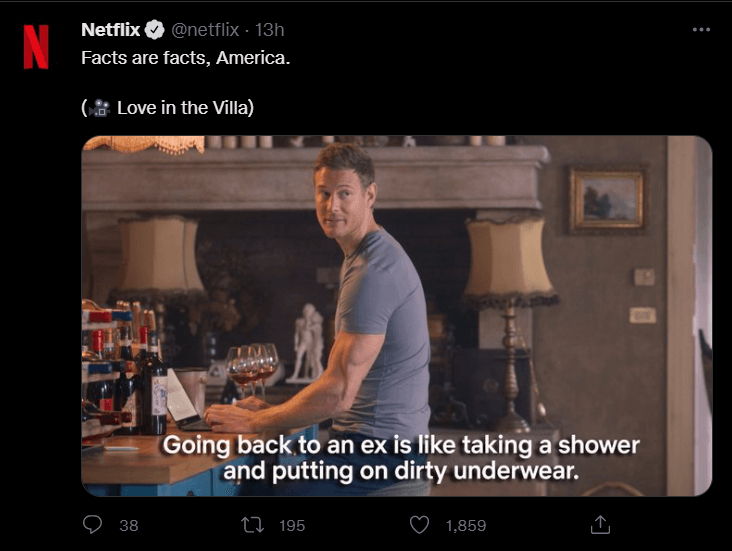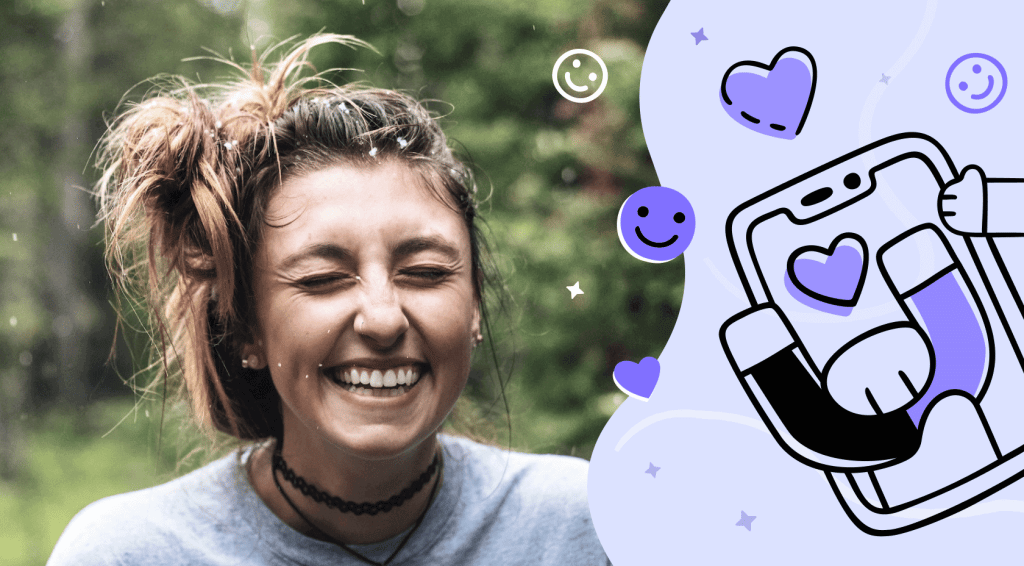Engaged customers are the holy grail of any business. After all, they don’t stop at simply buying your product or services — they sign up for all the events you’re hosting, take part in customer surveys, read your newsletters and articles, as well as promote your business to their friends and family. As a result, they can increase your revenue even by 70%, as claimed by Twilio in their State of Customer Engagement Report 2022.
Moreover, it’s more beneficial to cater to existing customers than to keep acquiring new ones. Not only is it more effective to convince existing customers to buy from you again, but it’s also cheaper. Increasing customer retention by just 5% can boost profitability by 75%, which clearly shows where your focus should be.
This level of engagement is a dream of many, but is it possible to achieve for an average business? How many of your clients can be turned into brand advocates? And of course, how can you build a solid customer engagement strategy that won’t flop?
Get to Know Your Customers
The key element to successful customer engagement is getting to know who these customers are in the first place. If you don’t, all your actions might be hit-or-miss, leading to disappointing results.
Buyer Persona
To fix that up, a buyer persona is created. It’s a fictional character that would represent your ideal customer. Their age, sex, location, education, job position, and interests, among others, are all considered. While the information itself seems simple enough, it’ll make a giant difference in making decisions. For example, by knowing the age and sex of your clients, you can make a better decision on which platform to market yourself — it’s a well-known fact that TikTok is preferred by teenagers and young adults, Twitter is dominated by men, while Instagram is preferred by women.
Most importantly, it’s crucial to determine the problems your buyer persona faces along with their needs and wants. You shouldn’t base that on your imagination, no matter how vivid it is. You should base all your assumptions on data and research instead.
If you already have a significant client base, it’d be easy for you to run interviews and send out surveys. If you aren’t at that stage yet, your best shot would be to analyze the clients of your closest competition.
Last but not least, remember that there might be more than one buyer persona and each of them will require their own marketing and sales approach.
CONCLUSION
It’s crucial for your business to know your clients like the back of your hand, and the best way to do that is to gather enough data. You can achieve that through collecting customer feedback, surveys, and interviews. Armed with these, you’ll be able to create a buyer persona, which as result, will help you make any decisions.
Social Media Market Research
Another goldmine can be found in social media. After all, not all customers speak openly to sales representatives — but they freely share their thoughts online with friends and strangers alike.
That’s why joining (or infiltrating) relevant social groups should be a key element in your strategy. Not only will you be able to uncover precious customer feedback entirely for free, but also:
- learn their language and sense of humor,
- observe and even anticipate trends,
- find out the main industry influencers,
- keep track of your competition,
- quickly react to any news or controversies,
- build a rapport with your target audience.
One of the best examples of companies that managed to engage customers in such a way is Netflix. It didn’t shy away from memes, interactive engagement with fans and celebrities alike, as well as using an authentic, friendly tone of voice, so different from what you might have expected from a corporation. In the peak popularity of its shows, it seemed like Netflix was just as excited for the new seasons as the fans — and it didn’t seem fake at all.

As a result, Netflix gained much more popularity on social media and, most importantly, customer loyalty and engagement, which are especially difficult to raise.
CONCLUSION
Don’t underestimate the power of social media — there’s a wealth of information that you can use for your gain. Not only can you gather more data on your clients, but also connect with them.
Data-Driven Marketing
The big day comes — you have everything figured out, you know your customers like the back of your hand, and nothing can stop you from dominating your chosen market. Unfortunately, I’ve got some bad news.
Here, the work never ends.
People change, along with their tastes. Trends change even faster, and there’s always the risk of disruptive factors influencing industries in unpredictable ways. This means that your customers might change their behavior or even leave entirely, making space for new clients. Or even your own priorities might change, leading to new ventures. Even if the shift isn’t as drastic, it’s still worth it to keep validating and updating your buyer persona.
That’s why collecting data on clients’ behavior never stops, as proven by the extreme popularity of selling and buying third-party data. Fortunately for consumers, that practice is becoming obsolete due to privacy concerns. Not only were clients apprehensive about their data being shared around without their explicit permission, but they were also concerned about security breaches. And not without reason — in 2019, Facebook’s data from 533 million people was leaked, while more recently, Twitter reported a data breach concerning 5.4 million accounts.
Those marketers who heavily relied on third-party cookies have to find different data sources to survive. In Salesforce’s State of Marketing 2021 report, the most popular ones were indicated to be known digital identities (email addresses, social IDs), transactional data as well as declared interests and preferences. In short, learning to better leverage first-party data seems to be the key to success. One way to achieve that is through a Customer Data Platform, which helps manage and analyze the gathered data. It’s a popular solution used by seventy-eight percent of high performers, as stated in the Salesforce report.
Some companies go one step further, turning towards zero-party data — like Cheetah Digital, which managed to gather 750,000 unique entrants and 15 million data points through the sweepstakes initiative alone.
CONCLUSION
Data is the most important weapon in a marketer’s arsenal. If you have trouble analyzing it, you can always use software built for that, or even reach towards the newest technologies like AI or machine learning.
Let the Customers Know YOU
Business is not only highly competitive, but also oversaturated with a myriad of products and services that constantly vie for our attention. With so many household names that make purchasing decisions a no-brainer, it’s extremely hard for new businesses to stand out, especially those that offer nothing new to the table. If you want to attract attention and, eventually, gain loyal customers, you need to go beyond the product.
Brand Storytelling
People love stories. In each of us, there’s an inherent need of attributing meaning to the surrounding world, sharing important lessons and experiences, as well as explaining the unexplainable. After all, it’s easier to blame the alignment of stars for our bad luck than accept that a series of failures was a pure coincidence.
The amount of consumed media clearly shows our attraction to a good narrative. Proof? An average viewer will spend 78,705 hours watching movies and TV shows in their lifetime, and that’s without accounting for consumed books and video games.
And without accounting for the amount of brand storytelling that we are fed every day, whether we are aware of it or not.
The main purpose of brand storytelling is to build an emotion-evoking narrative around the product or service. It should be memorable and unique, yet simple enough to be understood. It should strive towards the most basic emotions and instincts such as love, desire, feeling of belonging, or safety.
Not without a reason does Coca-Cola spin a tale of a warm and cozy Christmas evening spent with family and friends amid many colorful lights. The famous Coca-Cola truck became synonymous with the holiday season, while some people even think that the Coke brand created Santa Claus himself.
Another example is Ralph Lauren, who with their clothing lines managed to capture the preppy and aspirational look with timeless classics that now symbolize the American dream coming true. Ralph Lauren doesn’t just sell clothes — it sells a very specific lifestyle that’s coveted by many.
CONCLUSION
Having strong brand storytelling is crucial to attracting and capturing the attention of consumers. And in order to build a strong customer engagement strategy, it’s necessary to link your product with specific emotions, feelings, or a lifestyle. After all, material possessions are directly linked to personal identity,
Conscious Consumerism
Now more than ever, businesses are under close scrutiny. Consumers are asking more questions and exercising caution while making purchasing decisions. According to the Deloitte report on Sustainable Consumers in 2022, 34% of respondents claimed to have stopped purchasing specific products or brands because of ethical or sustainability concerns. This shows a steep increase in conscious consumerism compared to 2019, proving a change in consumer behavior.
Expectations go even further. In the 2020 Edelman Trust Barometer, 80% of respondents rated it as very or extremely important for brands to solve society’s problems in order to earn or keep their trust. 62% also held brands responsible for playing a critical role in addressing challenges, such as pandemic-related ones.
The brands that deliver on all those fronts can truly win over the people. Patagonia, a famous brand for outdoor clothing and gear for silent sports, managed to raise its worth to about $3 billion without sacrificing its sustainable and ethical principles. This brand has always been very transparent about its owned facilities, supply chains, working conditions, and how they affect the environment, which was already a big advantage over its competitors. And recently, Patagonia’s founder, Yvon Chouinard, donated his ownership to the Holdfast Collective and the Patagonia Purpose Trust in order to fight the environmental crisis and defend nature. That bold move will surely attract even more loyal customers who share similar values.
Let’s be honest — most companies aren’t interested in saving the world, they’re in it for profit. But remember that innovation has a powerful allure that can elevate you right to the top of the market. After all, no one really knows what metaverse is supposed to be or whether it’s even needed — and yet, many business sharks are already vying for their share.
CONCLUSION
In order to create a solid customer engagement strategy, you need to take into account the rising trend of conscious consumerism. It might differ between various industries and target audiences, but it’s important to take note of it and adjust to the new consumer expectations.
Use Actions Instead of Words
In the times of fake news and misinformation, people are more inclined to distrust. Especially government and religious leaders, journalists, and CEOs are under scrutiny. When it comes to business leaders, they’re accused of purposeful misleading by saying things they know are false or gross exaggerations, as indicated by 56% of respondents in the 2021 Edelman Trust Barometer.
That’s why it’s no longer enough to slap a pompous wall of text on the “About us” page on a website. Consumers need real actions to follow any statements. If you want to build your brand around diversity, sustainability, or making the world a better place in general, you need to prove that you really support such values. But empty gestures won’t cut it.
In 2018, when Nestlé claimed to have ambitions of having 100% recyclable or reusable packaging by 2025, it was quickly questioned by critics and called out by Greenpeace. And rightfully so — two years later, Nestlé once again gained the title of the world’s top plastic polluters in Break Free From Plastic’s 2020 annual report. Third time in a row.
Of course, Nestlé is big enough to survive such an outrage. But can you?
CONCLUSION
If you want to quickly lose the trust of your consumers, pretending to have lofty values or supporting causes only on paper is the way to go. It’s time for honesty or transparency because the public is ready to hold businesses accountable.
IKEA Effect & Sunk-Cost Fallacy
A tendency to overvalue our own work and undervalue the work of others is rather common. It’s especially clear when it comes to all sorts of DIY projects — once we try our hand at it, we realize how much time and effort is needed, therefore, we start to value the end results more.
There’s one company that used this common pitfall to its advantage — IKEA. By forcing people to assemble their own furniture, it made people overvalue their fruits of labor. Even if the fruits themselves weren’t that ripe.
Another interesting bias is the sunk-cost fallacy. If someone has invested enough resources — like time, money, data, social capital, or simply effort — in a particular venture, they’ll have a hard time abandoning it.

Another good example is social media in general. Many people, although they complain about Facebook, Twitter, or Tumblr, stay on those sites. They already have their own friends and family there, built memories in the form of photos and videos, and maybe even marketed their business. Switching to a new site would require them to start over, convince their community to move along with them, and to learn the rules and the algorithm of the new place. For many, this is too big of a price.
CONCLUSION
Anyone interested in creating their own customer engagement strategies should take a closer look at these two biases and learn how to use them. If you need further convincing, Nir Eyal in his book “Hooked: How to Build Habit-Forming Products” explains in-depth how crucial users’ investment is and how its wielded by such giants like Facebook, Spotify, or Adobe.
User-Generated Content (USG)
Another form of using the aforementioned biases is to encourage your customers to co-create and co-produce within your brand. After all, such social media sites like TikTok or YouTube couldn’t exist without user-generated content — therefore, it clearly shows just how powerful it can be. How can you use it for yourself?
Influencers
Hardly anyone likes to follow brands, but most love following other people, especially influencers. In the marketing world, they’re a force to be reckoned with — they have the power to truly make or kill a brand. Back in 2017, tickets for the Fyre Festival all sold out, even though they costed thousands of dollars and the information was scarce. All thanks to famous models who posted an orange picture on their Instagram profiles, saying how excited they were for the event that in the end, was a giant scam.
Despite that catastrophe, influencers are still more readily believed than brands. According to the PRNewswire, 37% of consumers trust influencers more, and the Influencer Marketing Industry is believed to reach $16.4 Billion this year, as stated in the State of Influencer Marketing 2022.
Contests
To many people, contests are exciting — with a stroke of luck, you can win amazing prizes for very little effort, often enough requiring a simple like, share, or a comment. Some brands go a little step further, with the Goldfish crackers being the best example. The users were asked to hold as many crackers in their hands as possible under the #GoForTheHandful Duet Challenge, resulting in over 30 million views on TikTok.
Supporting a Worthy Cause
Moliera 2, a Polish multi-brand luxury boutique, came up with a High Heels Day. For every picture of a high heel shoe with an appropriate hashtag posted on a specific day, the brand promised to donate money to charity. As a result, users posted over 500,000 photos on both Instagram and Facebook, leading to a giant success for the brand awareness campaign.
Employee-Generated Content (EGC)
You don’t have to count on strangers to generate content for you — your employees can do so just as well. Not only will it help with any future recruitments, but also in creating a better image; by showing a more humane and friendly side to the brand. Happy employees taking pride in their work is a sure sign of an ethical company, which consumers respect.
Also, people by nature are endlessly curious. Sharing behind-the-scenes images, your insight and wisdom, as well as celebrating your successes and failures publicly, can make people stay interested in your brand. Engaging customers will become easier, too — you can expect 8 times more engagement than with content shared by branded channels.
Also, it’s a great way of discovering hidden gems in your company. Nowadays, most people have some kind of online presence — some might be streaming their gaming adventures, writing thought-provoking pieces on their blog on societal matters, or hosting a fun podcast. They might already be established in certain circles and have a wide reach, so don’t let this opportunity for collaboration slide. These people might turn out to be real gold for any of your campaigns, so keep your eyes open!
On the downside, your brand narrative might get diluted and inconsistent, as well as out of your control. Also, if your employee gets into any online dramas, your brand might suffer a bit, so be careful in choosing your spokespeople.
Build a Community
Belonging to a group means safety and status. So it’s not that surprising that for many people, being alone is akin to a nightmare, leading even the “misfits” to group together. As always, you can use that to your advantage, but only if you’re smart about it.
The last thing you want to do is to create all sorts of groups on different channels that are supposed to be brand-worshippers. It’s all gain for the brand but none for the consumers, so nobody in their right mind would sign up for it. Instead, you should start with figuring out what benefits your customers would gain from being in your group. Possibilities are endless:
- unlimited access to otherwise restricted content,
- a peak into behind the scenes of your company,
- early access to your services and products,
- chance to acquire gifts, sales, or free samples.
If you want to build something stronger — a highly-interactive, engaged community that will last for more than a year — you need to go a step further. You need to offer a lifestyle. And the best example of that is Gymshark, a leading brand of the fitness industry that connects people who share the same passion and goals.
First of all, Gymshark doesn’t speak of their consumers as “clients”; they’ve chosen the word family, to shorten the distance. If it’s all semantics to you, think again — this is the simplest and yet one of the most effective ways of telling your clients you value them. The emotional connection sparks immediately.
To strike while the iron is hot, Gymshark amplifies that sense of belonging in different ways. First, it organizes meet-ups and even whole world tours, where the fans can get to know each other and share their experiences. Secondly, anyone that uses the #Gymshark66 tag on their Instagram photo can get featured in the Fam Friday stories. Next, Gymshark hosts different challenges that can be done at home, encourages meaningful discussions (#TalkTuesdays), and reminds people of the importance of rest and mental health, all while sharing tips and advice. Last but not least, Gymshark has released its own training app entirely for free.
To sum it up, Gymshark goes the extra mile to motivate, support, and inspire its customers. It never fails to deliver value and hardly ever uses its social media to generate direct sales — instead, it focuses on promoting a specific lifestyle and community. The sales will follow on their own.
CONCLUSION
To keep your consumers engaged with your brand, you need to create a strong, supportive community that promotes a specific lifestyle based on shared values and goals. Your clients will need strong reasons for them to even consider signing up.
Create Loyalty Programs
What if your company doesn’t sell products or services that are suitable for creating such a stellar customer journey, or you don’t have the means and resources to commit to such a venture?
Consider loyalty programs.
Loyalty programs are less community-oriented and they feel more transactional. The message basically is: “If you become our loyal client, you’ll pay less for our products or services”. This can mean more sale offers, best bargains, access to free samples, discount cards, and special deals for birthdays. In return, you should expect an easier time selling — it’s way easier to convince existing customers to make a purchase (60-70% chance) than to acquire new ones.
In theory.
In practice, while there are more than 90% of companies who have some kind of loyalty program, most of them are doing it wrong, generating more costs than profit. What’s the issue?
Exclusivity
First of all, loyalty programs only work well when they’re geared towards the best of your clients, those who have a longer than average history of engaging with your brand. If you offer your programs to everyone, you will attract the opportunity-seekers who keep jumping back and forth between different companies whenever they see a new bargain. They’re not here to stay.
Sephora’s famous program, Beauty Insider, made a wise decision of introducing three tiers: Insider, VIB, and Rogue. The first one is free to join but in order to advance you need to spend $350 and $1000 a year respectively. Each tier comes with its own perks and benefits, many of which are personalized.
This approach allows Sephora to better control the program. Because of the three tiers, they make sure that they don’t spend much on low-quality clients while rewarding the best ones. Also, the tiers bring out the competitive spirit in clients, encourage them to spend more, and entice them with a highly exclusive community of the last tier. As a result, 80% of sales is driven by the loyalty program’s members.
CONCLUSION
By catering to everyone, you might attract the wrong crowd that’s interested in a one-time gain. Instead, try to employ a strategy that rewards only those who are already
Personalization
Personalization on a great scale, achieved through machine learning, is the key behind Starbucks’ success — its loyalty rewards app is the most regularly used (48%), as proven by Manifest’s survey. What makes it so addictive?
By analyzing the behavior of its users and most importantly, their spending habits, the rewards that come from the earning stars model are better suited to each consumer. After all, it would be a disappointment to get a pumpkin spice latte while we hate it with a passion.
Moreover, the app is just too useful — it allows us to check the nearest shops, see their menus, and order in advance, giving us a head start in the morning rush. It’s a convenient solution to the most common of problems.
Now, Starbucks wants to go the extra mile by planning to include NFT rewards in their app. While it’s a controversial move, it shows a good approach in trying to anticipate the trends and cater to their clients’ true desires.
CONCLUSION
Personalization is the way to go in gaining your client’s trust and friendship. Once you convince them you care about them, they’ll be more willing to spend more on your brand. And research supports that — 90% of consumers view personalized marketing as somewhat or very appealing.
Referrals
Another way to approach loyalty programs is to combine them with referrals. Once you’ve figured out who has reached the heights of customer satisfaction, you can try to convert them into brand advocates.
After all, people love sharing their experiences with others, good or bad — so if you deliver either a horrendous customer experience or surprise them with a truly delightful one, they’ll share that with their network.
You can encourage them to do it more purposefully by offering all sorts of rewards (longer subscription, better prices, discounts, etc.) in exchange for convincing other people to join. This tactic is often used by banks — for example, Broadway Bank offers $50 for both the existing customer and the new one. This way, the existing customer can gain $500 annually, maximum.
The most difficult part of asking for referrals is nailing down the right moment. You can’t ask for the referrals too soon, but also not too late, once the excitement dries out. You need to find out the moment when they’re the happiest — maybe it’s a week after making a purchase, after they’ve left the review, or once they’ve upgraded to a more expensive subscription plan. The answer to that isn’t universal, so you’ll have to test it out yourself.
CONCLUSION
Word-of-mouth is a powerful tool that combined with loyalty programs can help you acquire new customers more efficiently. After all, people trust their friends more than the brands themselves — so turn that into your advantage!
How to Increase Customer Engagement: Final Words
We hope that with these customer engagement examples, you’ll be able to create your own customer engagement marketing strategy that’ll stay true to your brand while enriching the lives of your clients. Remember that the most important thing is to get to know them as much as possible — only then will you be able to create a relevant experience they won’t get enough of.
Also, times are changing. Consumers expect more of businesses than ever before and there are more factors to be taken into account before coming to any purchasing decisions. Put yourself in their shoes and figure out what value they gain from you, every step of the way.

A free online training. Delivered daily to your inbox to grow your productized agency.












